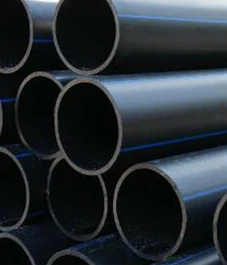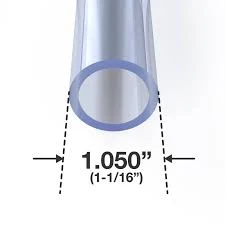Jun . 04, 2025 04:38 Back to list
Premium PPH Sheets Durable, Corrosion-Resistant Solutions
- Industry impact statistics for PPH materials
- Technical properties and material advantages
- Leading manufacturers comparison
- Customization possibilities
- Industry-specific application cases
- Installation best practices
- Future trends in polymer sheets

(pph sheet)
Understanding PPH Sheet Industrial Applications
The polymer processing industry has witnessed 17% annual growth in PPH sheet adoption since 2020, driven by their exceptional chemical resistance. With over 85% of chemical plants now specifying corrosion-resistant materials for secondary containment systems, PPH sheets have become essential components across multiple sectors. Industry forecasts predict the global PPH market will reach $2.3 billion by 2028, demonstrating its growing importance in industrial infrastructure.
Unlike traditional materials, PPH rigid sheets maintain structural integrity in pH environments from 1-14, outperforming PVC alternatives which degrade in extreme conditions. Recent ASTM tests show PPH maintains 92% of initial tensile strength after 12,000 hours of UV exposure, a critical advantage for outdoor installations. Manufacturers typically offer guaranteed lifespans of 15-25 years for properly maintained sheets, significantly reducing lifecycle replacement costs.
Technical Superiority in Material Engineering
PPH sheets achieve their performance through high-purity homopolymer formulations and specialized processing. The crystalline structure provides unique advantages over copolymer plastics:
- Lower thermal expansion coefficient (0.15 mm/m·K) than standard PP compounds
- Higher heat deflection temperature (100-110°C at 1.8 MPa)
- Superior stress cracking resistance (ASTM D1693 Rating: EB)
PP transparent sheet variants transmit 85-92% visible light while blocking UV wavelengths, making them ideal for corrosive environments requiring visibility. Recent innovations include co-extruded versions with protective outer layers that extend service life in abrasive applications by 40% according to ISO 4649 testing. The material's dielectric strength (≥80 kV/mm) also enables electrical applications where metal alternatives present safety concerns.
Manufacturer Performance Comparison
| Manufacturer | Thickness Range (mm) | Max Sheet Size | Special Features | UV Stabilization |
|---|---|---|---|---|
| PlastTech Industries | 2-120 | 3000x1500 | Electrostatic dissipative | Dual-layer |
| PolyChem Solutions | 3-100 | 4000x2000 | Anti-microbial coating | Nano-carbon |
| Advanced Polymer | 1-80 | 2500x1250 | Glass-reinforced | HALS technology |
| Material Sciences Corp | 5-150 | 3500x1500 | Thermally conductive | UV-8 additive |
Leading manufacturers typically offer comprehensive technical support including FEMAP stress modeling for custom applications. Minimum volume orders begin at 500 kg for standard formulations, though specialized grades require 2 MT commitments. Delivery cycles average 4-6 weeks for custom formulations, with expedited 10-day production available at 30% premium. Certification packages include FDA 21 CFR, WRAS, and NSF/ANSI 61 compliance documentation.
Custom Engineering Capabilities
Modern fabrication techniques enable precision customization of PPH rigid sheet materials beyond standard specifications. Waterjet cutting maintains dimensional accuracy within ±0.15 mm for intricate designs, while CNC thermoforming can achieve radii down to 3X material thickness. Custom modifications include:
- Chemical-resistant pigment integration for color-coding systems
- Multi-layer constructions with specialized barrier properties
- Surface texturing options from matte finishes to anti-slip patterns
For large-scale industrial projects, factory-level fusion welding creates seamless installations exceeding 100m² without joints. Advanced joining techniques like Hot Gas Extrusion welding achieve 93% parent material strength according to DVS 2207 testing. Specialty fabricators offer certified weld procedures qualified to EN 13067 standards for critical containment applications.
Application-Specific Solutions
PP transparent sheet applications demonstrate remarkable versatility across sectors. In water treatment facilities, 30mm thick sheets form corrosion-resistant channel liners handling highly abrasive slurries. Semiconductor manufacturers utilize static-dissipative grades for cleanroom equipment with surface resistivity between 10^6-10^9 ohms/sq.
The food processing sector increasingly adopts PPH sheets with antimicrobial additives that reduce bacterial adhesion by 98% compared to stainless steel (ISO 22196 testing). Recent mining industry applications include 80mm thick impact-resistant sheets for transfer chutes, increasing service intervals from 3 months to over 2 years. Material testing in hydrochloric acid storage confirms less than 0.08% weight change after 12 months immersion per ASTM D543.
Installation Protocols and Safety Procedures
Proper installation significantly impacts PPH sheet performance. Field cutting requires tooth geometry optimized for polypropylene, with 10-12 TPI blades preventing material binding. Anchor spacing must not exceed 300mm for vertically installed sheets under hydrostatic pressure.
Welding equipment must maintain precise temperature control between 270-300°C for effective fusion. Environmental factors including wind speed exceeding 2 m/s and ambient temperatures below 10°C require protective measures according to industry standards. Post-installation inspection protocols should include spark testing at 15 kV/mm to verify weld integrity for critical containment applications.
PPH Rigid Sheet Industry Evolution
Material scientists continue advancing PPH sheet technology through polymer modifications. Recent developmental grades incorporate nanoparticle reinforcement showing compressive strength improvements up to 120 MPa - comparable to aluminum alloys. Sustainability initiatives now focus on recycled content formulations maintaining at least 95% virgin material performance characteristics. Closed-loop recycling systems process manufacturing scrap into secondary products, reducing overall waste by 60% across production facilities.
Innovations in conductive polymer compounds are expanding applications into electrical enclosures requiring ESD protection. The latest fire-retardant formulations achieve UL94 V-0 classification while maintaining critical physical properties, opening opportunities in construction and transportation sectors. With ongoing performance enhancements and manufacturing efficiencies, PPH sheets remain at the forefront of industrial material solutions.

(pph sheet)
FAQS on pph sheet
Here are 5 FAQ groups about PPH sheets in HTML format with rich text features:Q: What is a PPH sheet?
A: PPH (Polypropylene Homopolymer) sheet is a thermoplastic material known for exceptional chemical resistance. It withstands corrosive environments like acids and solvents in chemical processing equipment. These rigid sheets offer high-temperature tolerance up to 100°C.Q: How does PPH Rigid Sheet differ from regular PP sheets?
A: PPH Rigid Sheets feature enhanced structural stability with superior creep resistance compared to standard PP. They maintain dimensional integrity under sustained pressure and heat, making them ideal for industrial tanks and ductwork systems where standard PP might deform.Q: Where are PP Transparent Sheets typically used?
A: PP Transparent Sheets provide excellent clarity (up to 93% light transmission) for visibility applications. Common uses include laboratory protective barriers, inspection windows in chemical tanks, and food-grade viewing ports where both transparency and chemical resistance are required.Q: Can PPH sheets be welded or fabricated?
A: Yes, PPH sheets can be thermally welded using hot gas/extrusion methods for leak-proof joints. They're easily fabricated using standard woodworking tools for cutting, routing, and drilling. Fabrication techniques allow customization into complex chemical containment systems.Q: What temperature range suits PPH sheet applications?
A: PPH sheets perform optimally between -20°C to +90°C. They maintain mechanical properties at elevated temperatures where many plastics fail, making them suitable for hot chemical transfer lines. For extreme temperatures above 100°C, specially stabilized grades are available.-
HDPE Natural Sheet: Durable, Food-Grade & Versatile Plastic Solutions
NewsAug.27,2025
-
Durable Glossy PVC Rigid Sheet | Premium High-Shine Panels
NewsAug.26,2025
-
Durable PP Rigid Sheet: Lightweight, Chemical Resistant Solutions
NewsAug.21,2025
-
PVC Grey Sheet for Extraction: Chemical Resistant & Durable
NewsAug.19,2025
-
Durable PVC Pipe Fittings for Plumbing & Irrigation Needs
NewsAug.18,2025
-
HDPE Steel Belt Reinforced Spiral Corrugated Pipe | High Strength
NewsAug.17,2025

